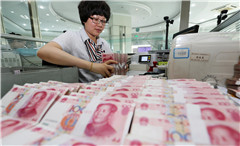Debt risks of central SOEs under control
2017-12-16
China Daily
Debt risks at China’s centrally administered State-owned enterprises are under control as the government has taken various measures to reduce the debt ratio, the State assets regulator said on Dec 15.
By the end of November, the average debt-to-asset ratio of China’s central SOEs dropped to 66.4 percent, 0.3 percentage point lower than the beginning of this year, the State-owned Asset Supervision and Administration Commission said.
“We have fully checked their bond repayment risks, drawn a debt ratio alarm line for each industry, and made specific requirements on the investment scale for each enterprise and each industry,” said Peng Huagang, deputy secretary-general of SASAC.
Profits at China’s central SOEs rose 17.2 percent year-on-year to 1.33 trillion yuan ($201.3 billion) in the first 11 months of this year, which was the highest growth rate in five years. During the Jan-Nov period, central SOEs’ revenue increased by 14.3 percent to 23.6 trillion yuan compared with the same period last year.
A State Council executive meeting on Dec 13 said that deleveraging SOEs and reducing their corporate debt will be prioritized to keep risks under control as the country pushes ahead its SOE reform.
Sang Baichuan, director of the Institute of International Business at the University of International Business and Economics in Beijing, said the high growth rate of SOE profits is due to supply-side structural reforms, the improving national economy and weak performance several years ago.
“SOEs should continue to invest more prudently and effectively to further reduce their debt ratio,” Sang said.
The SASAC will also further increase supervision of overseas State-owned assets, to make sure that the supervision covers more areas and ensure the safety and value of overseas assets owned by State-owned enterprises, according to Wang Wenbin, deputy director of SASAC.
Peng said the list for the third round of mixed-ownership reform has been determined and it covers 10 central SOEs and 21 local SOEs.
The first two rounds of mixed-ownership reform, aiming to bring private capital and vigor into the State sector, covered 19 SOEs that are gradually implementing their restructuring programs.
More than a third of them have completed most of their reforms, including introducing new investors, boosting corporate governance and setting up new internal incentive mechanisms, according to the National Development and Reform Commission, the country’s top economic planner.


